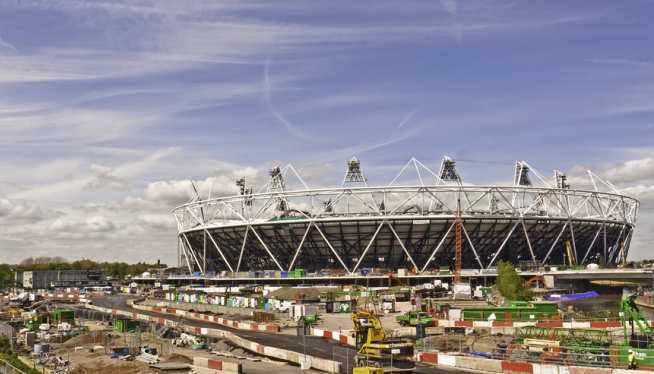Managing mega-projects

The Olympic Park, Crossrail, St Pancras Eurostar Terminal and Heathrow Terminal 5 are all examples of major construction endeavours that have benefited from a new approach to project management pioneered by Imperial College Business School
Related departments and groups
It's often said that Crossrail is the largest engineering construction project in Europe ‒ with 10,000 people working across more than 40 construction sites to build a route over 100km, that when complete will deliver an extra 1.5 million people to within 45 minutes of central London. All at a cost of around £14.8bn.
Needless to say, mega-projects like these don’t just fall into place. Managing and delivering them on time and to budget is almost a science in itself. And it doesn’t always go to plan. In the not-too-distant past, the UK construction industry was hampered by an isolationist approach, where firms were so focused on individual projects they often struggled to apply lessons learned from their own previous experiences, and from other projects in the industry.
Inside access
Tasked with overcoming these obstacles, the Innovation and Entrepreneurship Group at Imperial College Business School was given privileged access to four engineering design firms - Laing O’Rourke, Arup, Mace and BAA (now Heathrow Airport Holdings). The group looked at the firms’ respective R&D strategies and also compared how geographically dispersed and co-located project teams operated and the mechanisms they had in place for knowledge transfer.
Based on this evaluation the group devised a new ‘systems integration model’, designed to enable firms to draw on past experiences, improve the management of mega-projects and ensure that the delivery of such projects leads to better organisational capabilities.
The group also developed an executive education programmes to make senior project engineers aware of wider commercial and innovation issues.
Lasting legacy

The group's model has now been fully adopted by firms including Laing O'Rourke and has been applied to projects such as the St Pancras Eurostar Terminal in London (2007) Heathrow Terminal 5 (2008) and the construction of venues and stadia at the London 2012 Olympic Park, completed ahead of time and on budget (2011). The model was also used by Laing O'Rourke in the construction of the $20bn Al Raha City in Abu Dhabi ‒ and mostly recently Crossrail.
As those enormous tunnel digging machines continue their march across subterranean London we will see the tangible benefits of Imperial’s systems integration model when Crossrail welcomes its first passengers in May 2015. But the legacy will continue even beyond that with the lessons learned from Crossrail smoothly transferred to future mega-projects that will have a lasting impact the UK economy.
"We have partnered with Imperial in developing an innovation strategy to support the implementation of this complex £14.8bn rail industrial project. For the first time in this sector we see the developments of an open innovation model that will bring together the intellectual property of supply chains that span the construction, rail and manufacturing sectors. It is difficult to put a value on the opportunities this will open up for us and, I believe, the wider industries. As a conservative estimate, it will be in the region of tens of millions of pounds. (Andrew Wolstenholme OBE, CEO Crossrail, 24 October 2013)"


